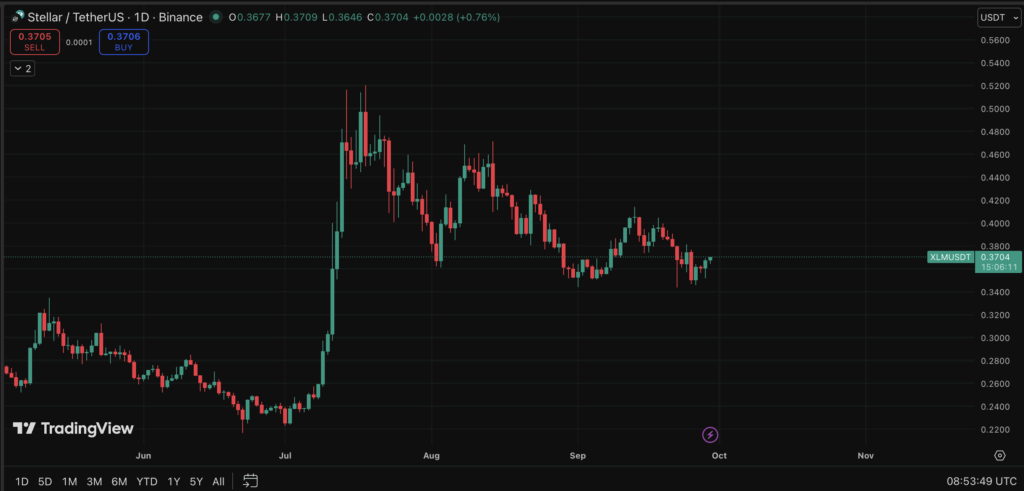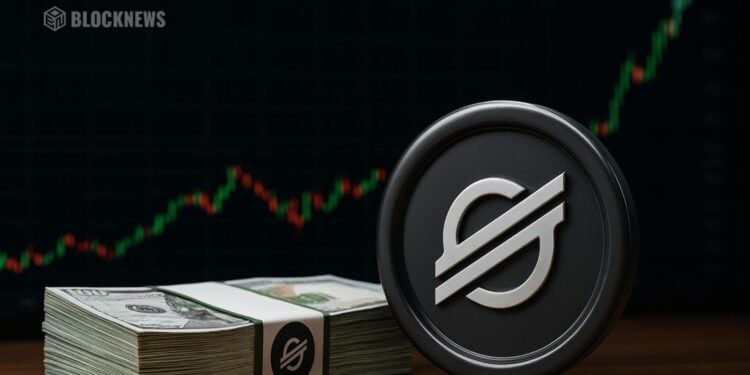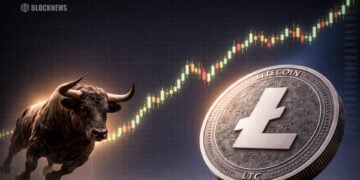- At $1, 12,603 XLM would be worth $12,603; at $10, it could hit $126,030—but downside risk to $0.20 would slash it to $2,520.
- Stellar is already being used for real-world payments, including UN aid distribution and CBDC pilots.
- Its growth hinges on expanding partnerships and competing with larger ecosystems like Ethereum, Solana, and Cardano.
Stellar’s token XLM is trading near $0.3577, giving the project a market cap of about $12.9 billion. A recent analysis looked at what 12,603 XLM might be worth by 2026 under different adoption scenarios. The focus is on Stellar’s partnerships, its real-world payment use cases, and how much demand might grow if adoption accelerates.
Stellar’s Role and Real-World Use Cases
While Ripple is laser-focused on banks and large institutions, Stellar has taken a different path. Its network is built around individuals, NGOs, and fintechs—especially those operating in developing regions where fast and low-cost transfers are most needed.
And it’s not just theory. The UN’s refugee agency (UNHCR) has already used Stellar wallets to distribute direct aid to people in Ukraine. On top of that, the Stellar Development Foundation is helping test Ukraine’s digital hryvnia and continues to back USDC transfers on its blockchain. These real-world projects highlight why Stellar has carved out a space in global payments.

How Much Could 12,603 XLM Be Worth in 2026?
If Stellar simply manages to retest the $1 level—a price it has reached before—then 12,603 XLM would equal $12,603. Stronger adoption through CBDCs or deeper institutional use could push it to $2, doubling the holding’s value to roughly $25,206.
A more aggressive rally to $5 would mean the same stash of tokens is worth $63,015. And in a truly bullish case, a $10 XLM would value it at $126,030. Of course, the opposite is also possible. If the market stumbles and XLM sinks to $0.20, those 12,603 coins would shrink to about $2,520.
Strengths and Risks Ahead
Stellar’s strength lies in its focus on financial inclusion, plus its partnerships with NGOs, governments, and fintech players. Its role in stablecoin transfers, especially USDC, also gives it real relevance in crypto payments.
Still, competition is fierce. Ethereum, Solana, and Cardano dominate in areas like DeFi and NFTs—ecosystems that pull huge amounts of liquidity and developer talent. For Stellar, the next few years will hinge on whether it can keep securing partnerships and expanding adoption at scale.
By 2026, the value of 12,603 XLM will depend less on short-term price swings and more on whether Stellar cements itself as a trusted global payments network. If it does, the upside scenarios become far more realistic.














